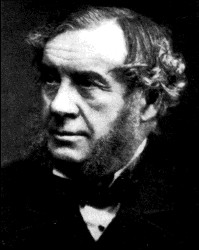Sir William Grove (1811–1896)
Sir William Robert Grove is known as “Father of the Fuel Cell.” Grove was born in Swansea, Wales in 1811. Grove was educated by private tutors and then at Brasenose College, Oxford, and also studied law at Lincoln's Inn and was called to the bar in 1835.

At the London Institution, where he was professor of physics (1840-1847), he used his platinum-zincbatteries to produce electric light for one of his lectures. His classic "On the Correlation of Physical Forces" (1846) enunciated the principle of conservation of energy a year before the German physicist Hermann von Helmholtz did so in his famous paper "On the Conservation of Force".
Grove's scientific career led to the practice of patent and other law after 1853. Grove was appointed as a barrister and a judge to the Court of Common Pleas in 1871. He also served in the High Court of Justice. Grove was knighted in 1872. Ill health interrupted his law career, and he turned to science. After retirement from the bench in 1887, he resumed his scientific studies. (photo courtesy: http://dbhs.wvusd.k12.ca.us/Gallery/Gallery0.html)
Grove also invented two cells of special significance. His first cell consisted of zinc in dilute sulfuric acid and platinum in concentrated nitric acid, separated by a porous pot (Grove Cell). Grove's nitric acid cell was the favorite battery of the early American telegraph (1840-1860), because it offered strong current output. This cell had nearly double the voltage of the first Daniell cell. By the time of the American Civil War, Grove's battery was replaced by the Daniell battery. As telegraph traffic increased, it was found that the Grove cell discharged poisonous nitric di gas. Large telegraph offices were filled with gas from rows of hissing Grove batteries. As telegraphs became more complex, the need for constant voltage became critical and the Grove device was necessarily limited (as the cell discharged, nitric acid was depleted and voltage was reduced).
His second cell, a “gas voltaic battery” was the forerunner of modern fuel cells. William Grove produced the first fuel cell in 1839 over 150 years ago. He based his experiment on the fact that sending an electric current through water splits the water into its component parts of hydrogen and oxygen. So, Grove tried reversing the reaction - combining hydrogen and oxygen to produce electricity and water. This is the basis of a simple fuel cell. The term “fuel cell” was coined later in 1889 by Ludwig Mond and Charles Langer, who attempted to build the first practical device using air and industrial coal gas.

Connect with us
Contact us today